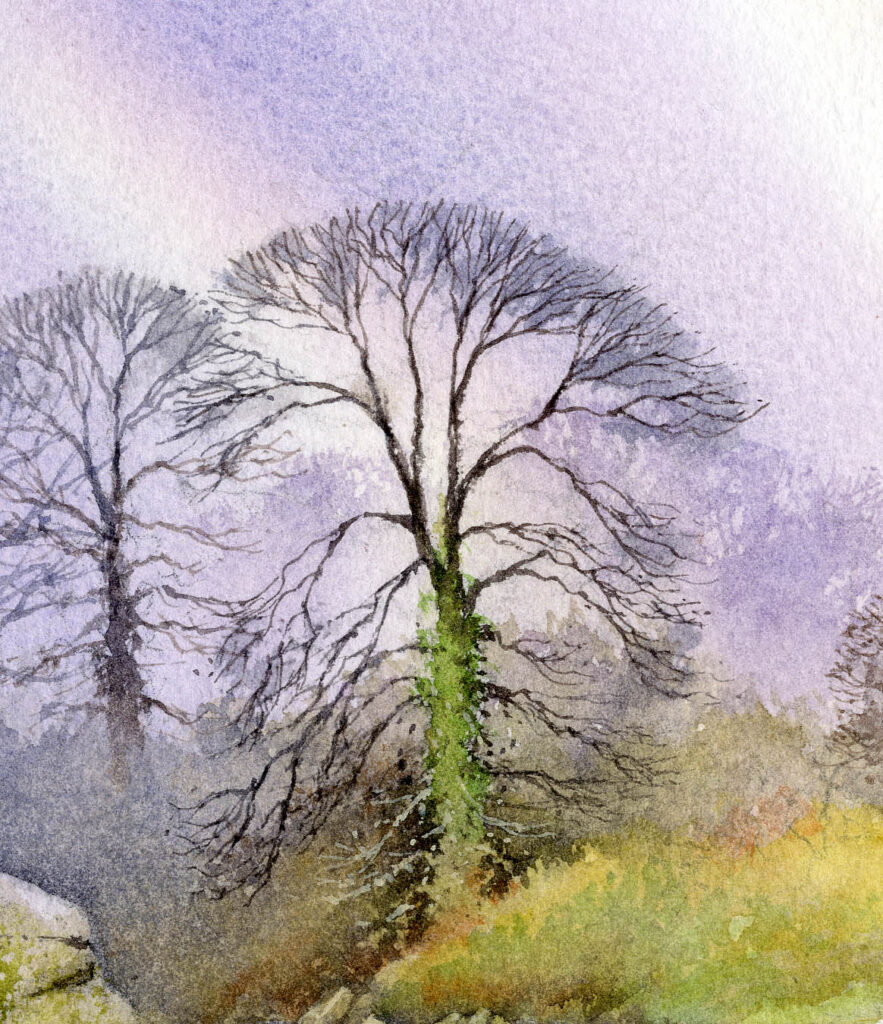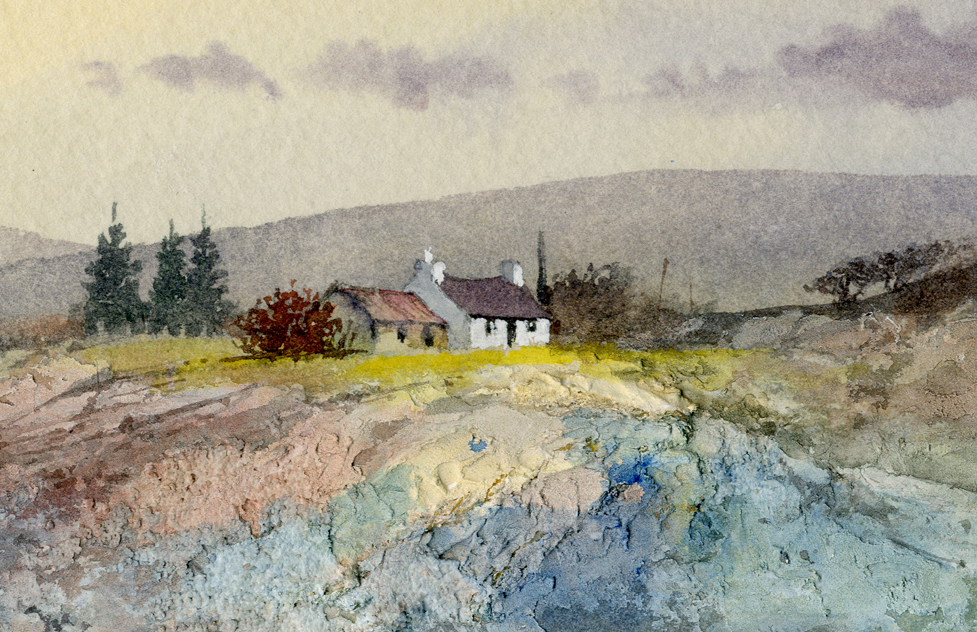The sight of a beautiful mature winter tree can bring such joy, and spending a little time ensuring your trees bring out those magical feelings is well worthwhile. When I come across a fine example I sketch and photograph the tree from different angles, and in the studio I keep these in a support file which is a reservoir of landscape features that I can add to a scene I am working on, or substitute for some blasted and tattered beanpole of an excuse for a tree that might be present in a scene.

These trees are part of a composition, and as you can see the supporting tree on the left has been left almost as a monochrome, while fading it out at the bottom, two effective methods of pushing it into the background. More colour has been brought into the trunk of the main tree, and this is something important to observe in a mature winter tree. The green apatite genuine in the middle section of the trunk gives way to light red near the bottom, while higher up against the light background the trunk and branches become silhouettes. The dark background bushes define the lower trunk and some of the thin branches have been created by scratching with a scalpel when the paper had dried. Watch for the character of the branches in your trees, and here you see how they have been drawn with a sinuous downward looping, apart from the topmost branches. The finer ones were achieved with a no. 1 rigger brush. I used Daniel Smith watercolours and Saunders Waterford not high-white paper.
Seek out these lovely examples and study the trunks in particular. I sometimes work more detail into really exciting trunks, and in Radnorshire we have some fabulous trees, so deliciously twisted and gnarled that you expect some witch to fly out of the branches. There are many examples of trees in my books: my Complete Guide to Landscapes is packed with them, and you can easily obtain them from Search Press.
I shall be giving a demonstration of winter trees in watercolour at Erwood Station Craft Centre on Saturday 1st November. This will include showing how to use a tree as a focal point, adding in supporting trees, suggesting distant trees, enhancing trees with colour, avoiding the silhouette effect, and so much more. Tickets are available at www.evenbrite.co.uk and if you need further information Erwood Station can be contacted on 01982 560555 Proceeds from the event will be donated to MidWales Mind charity. Bring a notebook, camera and any questions you may have.
Another demonstration that is open to all will be at the International Watercolour Masters 2026 at Lilleshall Hall in Shropshire on 18th May 2026. You can book my session there now at www.iwm2026.com





